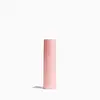What's inside
What's inside
 Key Ingredients
Key Ingredients

 Benefits
Benefits

 Concerns
Concerns

 Ingredients Side-by-side
Ingredients Side-by-side

Water
Skin ConditioningTetrahexyldecyl Ascorbate
AntioxidantEthoxydiglycol
HumectantCaprylic/Capric Triglyceride
MaskingJasminum Officinale Flower Extract
MaskingLavandula Angustifolia Flower Extract
CleansingVitis Vinifera Seed Extract
AntimicrobialPropanediol
SolventTetrasodium Glutamate Diacetate
Pentylene Glycol
Skin ConditioningAcrylates/C10-30 Alkyl Acrylate Crosspolymer
Emulsion StabilisingPhenethyl Alcohol
MaskingTocopheryl Acetate
AntioxidantSodium Hydroxide
BufferingGlycerin
HumectantWater, Tetrahexyldecyl Ascorbate, Ethoxydiglycol, Caprylic/Capric Triglyceride, Jasminum Officinale Flower Extract, Lavandula Angustifolia Flower Extract, Vitis Vinifera Seed Extract, Propanediol, Tetrasodium Glutamate Diacetate, Pentylene Glycol, Acrylates/C10-30 Alkyl Acrylate Crosspolymer, Phenethyl Alcohol, Tocopheryl Acetate, Sodium Hydroxide, Glycerin
Water
Skin ConditioningPropanediol
SolventPentylene Glycol
Skin ConditioningGlycerin
HumectantPhenethyl Alcohol
MaskingHydrolyzed Rice Protein
Skin ConditioningPolyglyceryl-6 Caprylate
EmulsifyingPolyglyceryl-3 Cocoate
EmulsifyingPolyglyceryl-4 Caprate
EmulsifyingPolyglyceryl-6 Ricinoleate
EmulsifyingSodium Gluconate
Skin ConditioningErythritol
HumectantHydrolyzed Pea Protein
EmollientCaprylic/Capric Triglyceride
MaskingMaltodextrin
AbsorbentAcacia Seyal Gum Extract
HumectantLactobacillus Ferment
Skin ConditioningArtemisia Capillaris Flower Extract
Skin ConditioningHibiscus Sabdariffa Flower Extract
Skin ConditioningGlycine
BufferingProline
Skin ConditioningHydrolyzed Sodium Hyaluronate
Skin ConditioningPalmitoyl Tripeptide-37
Skin ConditioningPotassium Sorbate
PreservativeCitric Acid
BufferingBenzyl Alcohol
PerfumingSodium Benzoate
MaskingWater, Propanediol, Pentylene Glycol, Glycerin, Phenethyl Alcohol, Hydrolyzed Rice Protein, Polyglyceryl-6 Caprylate, Polyglyceryl-3 Cocoate, Polyglyceryl-4 Caprate, Polyglyceryl-6 Ricinoleate, Sodium Gluconate, Erythritol, Hydrolyzed Pea Protein, Caprylic/Capric Triglyceride, Maltodextrin, Acacia Seyal Gum Extract, Lactobacillus Ferment, Artemisia Capillaris Flower Extract, Hibiscus Sabdariffa Flower Extract, Glycine, Proline, Hydrolyzed Sodium Hyaluronate, Palmitoyl Tripeptide-37, Potassium Sorbate, Citric Acid, Benzyl Alcohol, Sodium Benzoate
Ingredients Explained
These ingredients are found in both products.
Ingredients higher up in an ingredient list are typically present in a larger amount.
This ingredient is an emollient, solvent, and texture enhancer. It is considered a skin-softener by helping the skin prevent moisture loss.
It helps thicken a product's formula and makes it easier to spread by dissolving clumping compounds.
Caprylic Triglyceride is made by combining glycerin with coconut oil, forming a clear liquid.
While there is an assumption Caprylic Triglyceride can clog pores due to it being derived from coconut oil, there is no research supporting this.
Learn more about Caprylic/Capric TriglycerideGlycerin is already naturally found in your skin. It helps moisturize and protect your skin.
A study from 2016 found glycerin to be more effective as a humectant than AHAs and hyaluronic acid.
As a humectant, it helps the skin stay hydrated by pulling moisture to your skin. The low molecular weight of glycerin allows it to pull moisture into the deeper layers of your skin.
Hydrated skin improves your skin barrier; Your skin barrier helps protect against irritants and bacteria.
Glycerin has also been found to have antimicrobial and antiviral properties. Due to these properties, glycerin is often used in wound and burn treatments.
In cosmetics, glycerin is usually derived from plants such as soybean or palm. However, it can also be sourced from animals, such as tallow or animal fat.
This ingredient is organic, colorless, odorless, and non-toxic.
Glycerin is the name for this ingredient in American English. British English uses Glycerol/Glycerine.
Learn more about GlycerinPentylene glycol is typically used within a product to thicken it. It also adds a smooth, soft, and moisturizing feel to the product. It is naturally found in plants such as sugar beets.
The hydrophilic trait of Pentylene Glycol makes it a humectant. As a humectant, Pentylene Glycol helps draw moisture from the air to your skin. This can help keep your skin hydrated.
This property also makes Pentylene Glycol a great texture enhancer. It can also help thicken or stabilize a product.
Pentylene Glycol also acts as a mild preservative and helps to keep a product microbe-free.
Some people may experience mild eye and skin irritation from Pentylene Glycol. We always recommend speaking with a professional about using this ingredient in your routine.
Pentylene Glycol has a low molecular weight and is part of the 1,2-glycol family.
Learn more about Pentylene GlycolPhenethyl Alcohol is a colorless and aromatic alohol. It is naturally occuring in essential oils.
The scent of this ingredient is floral and often compared to rose.
Like other alcohols, this ingredient helps prevent the growth of bacteria. However, its main purpose is to impact a fragrance.
Learn more about Phenethyl AlcoholPropanediol is an all-star ingredient. It softens, hydrates, and smooths the skin.
It’s often used to:
Propanediol is not likely to cause sensitivity and considered safe to use. It is derived from corn or petroleum with a clear color and no scent.
Learn more about PropanediolWater. It's the most common cosmetic ingredient of all. You'll usually see it at the top of ingredient lists, meaning that it makes up the largest part of the product.
So why is it so popular? Water most often acts as a solvent - this means that it helps dissolve other ingredients into the formulation.
You'll also recognize water as that liquid we all need to stay alive. If you see this, drink a glass of water. Stay hydrated!
Learn more about Water